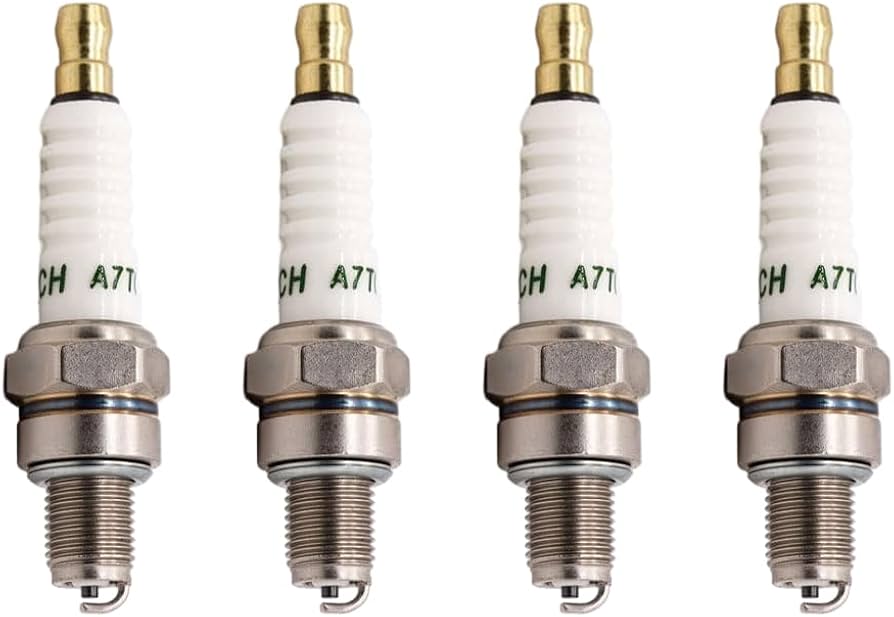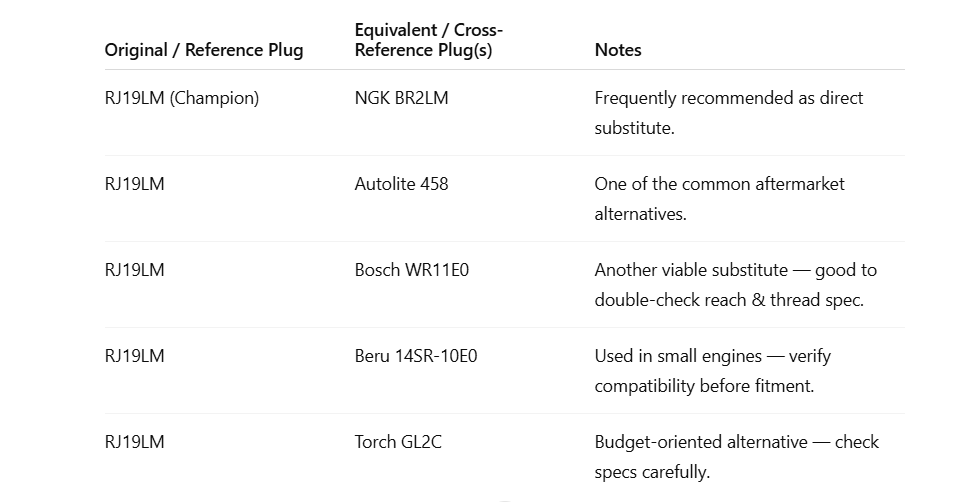AC Delco R45TS to NGK: The NGK BPR4FS is the recommended equivalent for the AC Delco R45TS spark plug. It matches the key specifications like thread size, reach, and heat range, providing a seamless replacement for optimal engine performance.
Spark plugs are small but mighty when it comes to getting your car’s engine to roar to life. The right spark plug guarantees a crisp ignition, which in turn squeezes out better gas mileage, lowers harmful exhaust, and gives your motor a longer lifespan. The trick, however, is knowing which plug to grab when a store doesn’t stock the original. For classic GM builds, the AC Delco R45TS is a part number a lot of enthusiasts know by heart. You don’t always have an R45TS on hand, so in comes the need to find an NGK equivalent or a suitable copy from another brand.
In this post, we’ll walk you through the R45TS, decode the specs, find its NGK match, and guide you on ordering the right plug so your engine keeps humming at its best.

Contents
What is the AC Delco R45TS?
The R45TS is a copper-core spark plug designed for the older GM powerhouses. AC Delco has built its reputation by producing sturdy, on-spec parts, and when it comes to GM, any plug that carries the AC logo is expected to meet factory standards. The copper core itself is there for effective heat dissipation, a must when an engine is purring at high RPMs.
Key Specifications of the AC Delco R45TS
When it’s time to replace the AC Delco R45TS spark plug, knowing the specs helps you pick the right NGK match. Here’s a quick rundown of the important numbers.
- Thread Size: 14mm
- Reach: 3/4 inch (19mm)
- Heat Range: 5
- Seat Type: Flat gasket
- Electrode Design: Standard (Copper core)
- Resistor: Yes (reduces noise to keep electronics clear)
- Application: Mainly found in older GM engines, including trucks, cars, and muscle cars.
Why the Heat Range Matters
Heat range shows how a spark plug moves heat away from the combustion chamber. The AC Delco R45TS heat range of 5 is average, making it a solid choice for everyday driving tasks. It’s not built for the high demands of racing or high-performance engines, so if you’re upgrading a high-performance ride, look for a plug with a heat range designed to handle that extra heat.
Cross-Referencing the AC Delco R45TS to NGK
When you need a replacement spark plug and want a number from another brand, cross-referencing is a must. NGK is a trusted name that supplies high-quality plugs to many car makers, including General Motors. If you’re swapping the AC Delco R45TS, the NGK part that the pros most often point to is the BPR4FS.
NGK BPR4FS: Direct Plug-and-Play for AC Delco R45TS
The NGK BPR4FS is one plug away from being the ideal swap for the AC Delco R45TS. It keeps the same specs that matter: thread size, reach, heat range, and the way the electrode is built. Check out the highlights for the BPR4FS:
- Thread Size: 14mm
- Reach: 3/4 inch (19mm)
- Heat Range: 4 (one size colder than R45TS)
- Seat Type: Gasket
- Electrode Design: Standard (copper core)
- Resistor: Present
Why Choose NGK BPR4FS?
Reaching for the NGK BPR4FS is a savvy upgrade instead of the AC Delco R45TS. It fits, performs, and keeps working season after season. Here’s why both the pros and weekend gearheads keep NGK in their toolbox:
Trusted Technologies: NGK sprinkles smart science on every plug. The BPR4FS is built to fire every time the engine wants, keeping the spark steady whether in a city commute or a spirited Saturday drive.
Built to Outlast: NGK plugs with heavy-duty parts stand the heat. The BPR4FS handles the edge of engine pressure and temperature, making it the kind of plug that will out-mile a budget option and rarely leave you in the parking lot.
Availabilityː Finding the NGK BPR4FS spark plug isn’t hard. It’s stocked at most auto parts stores, so you can easily grab one for any vintage or classic ride.
Compatibilityː Because the BPR4FS is built to match all the key specs of the R45TS, you can swap one for the other without any fuss, and the engine won’t even know. Performance stays top-notch.
Spark Plug Specifications: decoded numbers
NGK uses the sequence BPR4FS, and it can look like code at first. Here’s a quick breakdown of what each letter and digit actually tells you.
- Bː Thread diameter is 14mm. Standard fit.
- Pː Regular-size spark plug, so it gets into the most common engine application.
- Rː Resistor type. This keeps buzzing noise from messing with your radio and onboard electronics.
- 4ː Heat range number. Lower is hotter; the number 4 is one step cooler than R45TS at 5. That cooler plug is safer for regular street use and helps with engine wear.
- Fː Gasket-type tip. It has a flat washer, which helps seal and keeps compression up.
- Sː Standard copper core. Solid choice for daily driver setups; it offers reliable ignition without breaking the bank.
By checking the right specs, you’ll end up with the perfect spark plug for your engine, keeping performance at its best.
How to Install NGK BPR4FS Spark Plugs
Swapping spark plugs isn’t hard, but you need to take your time to avoid cross-threading or other problems. Here’s how to exchange an AC Delco R45TS for an NGK BPR4FS, step by step.
Step 1: Gather the Right Tools
Before turning the first wrench, collect the following gear. Having everything within reach makes the job quick and keeps you from nicking anything in the engine.
- Spark Plug Wrench: A 3/8-inch drive is best, especially with a rubber insert to hold the plug.
- Torque Wrench: Controls the final snug without overtightening.
- Spark Plug Gap Tool: Only if you need to check or adjust the gap set by the NGK plug.
- Anti-Seize Compound: Optional, but it makes future removals easier.
- Clean Cloth: Wipe down the area to avoid debris falling into the cylinder during the swap.
Step 2: Remove the Old Spark Plug
Take your time with the old spark plug. Start by wiping off the area with a cloth, then use the spark plug wrench to turn the plug counterclockwise. Keep the wrench straight, and lift the plug gently straight up to avoid dropping any debris into the cylinder.
- Locate the Spark Plug: Check the owner’s manual for the exact location of the spark plug.
- Remove the Ignition Wire: Gently pull the spark plug wire straight off the terminal. Avoid twisting to prevent breaking the wire.
- Unscrew the Spark Plug: Grab a spark plug socket and turn it counterclockwise. Don’t force it; go slow to prevent cross-threading.
Step 3: Install the New NGK BPR4FS Spark Plug
Installing the new NGK BPR4FS properly is key for smooth engine performance. Follow these detailed steps to get it done right.
- Check the Gap: Even if the BPR4FS looks pre-gapped, use a gap tool to double-check. The ideal gap for your engine will usually be around 0.028” to 0.060”.
- Apply Anti-Seize (Optional): If you have anti-seize, put a tiny dab on the threads of the new plug. Keep it thin to ensure your spark plug doesn’t get cross-threaded.
- Install the New Spark Plug: Carefully line the plug up with the hole and screw it in by hand—clockwise. This prevents cross-threading. When it’s snug, use the socket and tighten it to the torque listed in the manual, usually around 15-20 ft-lbs depending on the engine.
- Tighten Spark Plug with a Torque Wrench: Use a torque wrench to set the spark plug to the specs the manual gives you—this is usually 18 to 25 lb-ft (pound-feet). Holding the wrench steady and letting it click will keep you on target. Read more about How Tight to Tighten Spark Plugs.
Step 4: Reattach Spark Plug Wire
After the new plug is snug, push the spark plug wire back on until you hear a click. This sound confirms the wire is seated securely to carry the spark.
Step 5: Install Remaining Spark Plugs
If your engine uses several plugs, keep repeating the above two steps until every new plug is in and every wire is snapped on.
Common Spark Plug Replacement Mistakes to Avoid
Changing spark plugs is easy, but one wrong step can make your engine cough and sputter. Avoid these missteps for a job that keeps your engine running smoothly.
Tightening Too Much: Going over the torque spec can strip threads and even crack the cylinder head. Use the torque wrench, stay within specs, and breathe easy.
Skipping the Gap Check: Some plugs come gapped, but you should still check. A gap that’s too wide or too tight can lead to engine misfires, reduced fuel mileage, and costly repairs. Always measure before installing.
Using the Wrong Spark Plug: Choosing the incorrect spark plug can seriously harm engine performance—or worse, the engine itself. Before buying a plug, always check the part number against the engine specifications. This simple step can save you a lot of trouble later.
NGK Spark Plug Advantages Over Other Brands
AC Delco spark plugs are a respected name, but many car owners and mechanics prefer NGK plugs. Here are a few reasons why NGK has a loyal following:
Innovative Technology: NGK uses high-tech materials like platinum and iridium. These help the plug last longer and deliver a steadier spark.
Wide Availability: You can find NGK plugs in stores around the world, so locating one that fits your engine is usually easy.
Performance: Whether you have a high-compression engine or a factory performance vehicle, NGK has the spark plug that can keep it running strong.
Frequently Asked Questions
Here are some FAQs about ac delco r45ts to ngk –
1. Can I use the NGK BPR4FS instead of the AC Delco R45TS?
Yes, the NGK BPR4FS is a direct drop-in for the AC Delco R45TS, and it meets all key specifications.
2. Is the NGK BPR4FS suitable for all GM engines?
The BPR4FS works well in many GM powerplants, but it’s always smart to check your owner’s manual for confirmation.
3. When Should I Replace My Spark Plug?
Rough idling, sluggish acceleration, and dipping fuel economy are strong hints that your spark plug is past its best. Watch for engine misfires or sluggish starts—those are loud alarms that a new plug is needed.
4. Do I Need to Gap the NGK BPR4FS Plug?
The NGK BPR4FS plug usually comes pre-gapped, but a quick double-check with a gap tool is smart. A tiny misalignment could cause a big difference, so spending a minute verifying the gap is worth the effort.
5. How Far Can I Drive on an NGK BPR4FS Spark Plug?
Expect the NGK BPR4FS to perform well for 30,000 to 50,000 miles. The exact number depends on your engine and your driving habits—highway miles often stretch the lifespan, while short trips and stop-and-go can shorten it.
Conclusion
Whether you’re bringing a classic car back to life or caring for an older GM block, the right spark plug is key to keeping your engine humming smoothly. The NGK BPR4FS is a solid replacement for the AC Delco R45TS, offering value and dependable performance. Always double-check your owner’s manual for specs, and enjoy a smoother, more fuel-efficient ride with the correct plugs installed.





